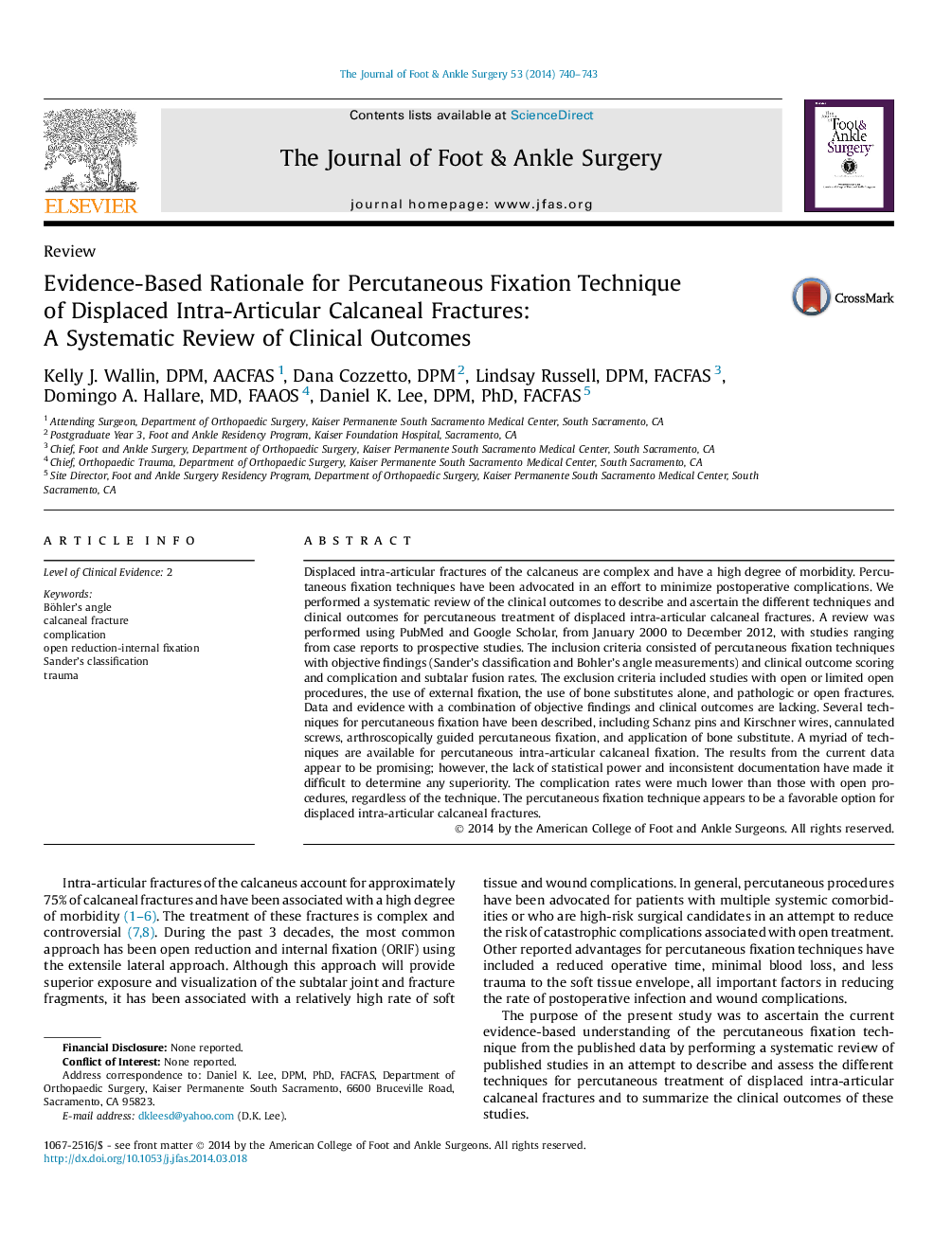| Article ID | Journal | Published Year | Pages | File Type |
|---|---|---|---|---|
| 2715367 | The Journal of Foot and Ankle Surgery | 2014 | 4 Pages |
Displaced intra-articular fractures of the calcaneus are complex and have a high degree of morbidity. Percutaneous fixation techniques have been advocated in an effort to minimize postoperative complications. We performed a systematic review of the clinical outcomes to describe and ascertain the different techniques and clinical outcomes for percutaneous treatment of displaced intra-articular calcaneal fractures. A review was performed using PubMed and Google Scholar, from January 2000 to December 2012, with studies ranging from case reports to prospective studies. The inclusion criteria consisted of percutaneous fixation techniques with objective findings (Sander's classification and Bohler's angle measurements) and clinical outcome scoring and complication and subtalar fusion rates. The exclusion criteria included studies with open or limited open procedures, the use of external fixation, the use of bone substitutes alone, and pathologic or open fractures. Data and evidence with a combination of objective findings and clinical outcomes are lacking. Several techniques for percutaneous fixation have been described, including Schanz pins and Kirschner wires, cannulated screws, arthroscopically guided percutaneous fixation, and application of bone substitute. A myriad of techniques are available for percutaneous intra-articular calcaneal fixation. The results from the current data appear to be promising; however, the lack of statistical power and inconsistent documentation have made it difficult to determine any superiority. The complication rates were much lower than those with open procedures, regardless of the technique. The percutaneous fixation technique appears to be a favorable option for displaced intra-articular calcaneal fractures.
